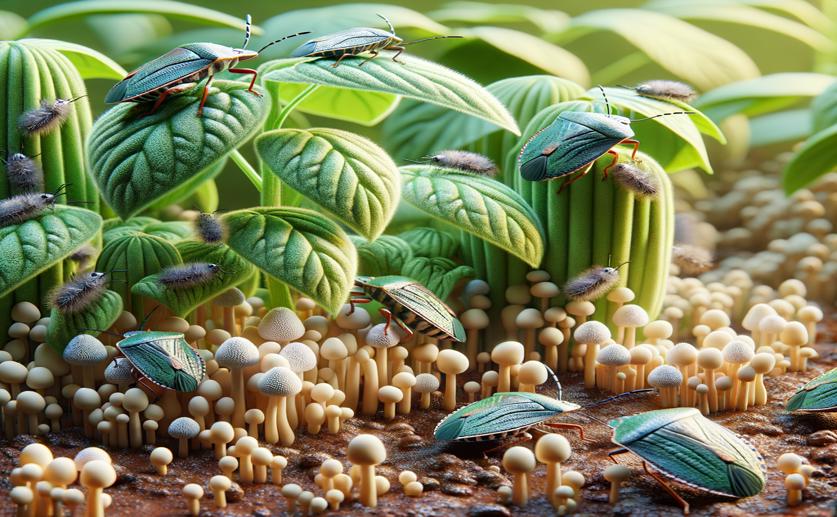
Fungal Allies Combat Stink Bugs in Beans
Jim Crocker
25th April, 2024

Image Source: Natural Science News, 2024
Key Findings
- In Latin America, Cuban strains of the fungus Beauveria bassiana effectively kill harmful stink bugs on beans
- The fungus infects bugs through their shell, multiplies inside, and causes death, offering an eco-friendly pest control method
- Tests in semi-field conditions show the fungus could be integrated into pest management, reducing reliance on chemical pesticides
References
Main Study
1) Biological control potential of two Beauveria bassiana isolates against the stink bugs Nezara viridula L. and Piezodorus guildinii Westwood (Hemiptera: Pentatomidae) in common bean
Published 23rd April, 2024
https://doi.org/10.1186/s41938-024-00787-3
Related Studies
2) Natural Enemies and Biological Control of Stink Bugs (Hemiptera: Heteroptera) in North America.
3) The fungistatic and fungicidal effects of volatiles from metathoracic glands of soybean-attacking stink bugs (Heteroptera: Pentatomidae) on the entomopathogen Beauveria bassiana.
4) The production and uses of Beauveria bassiana as a microbial insecticide.
5) Seeding Dates and Cultivars Effects on Stink Bugs Population and Damage on Common Bean Phaseolus vulgaris L.



 7th April, 2024 | Jenn Hoskins
7th April, 2024 | Jenn Hoskins